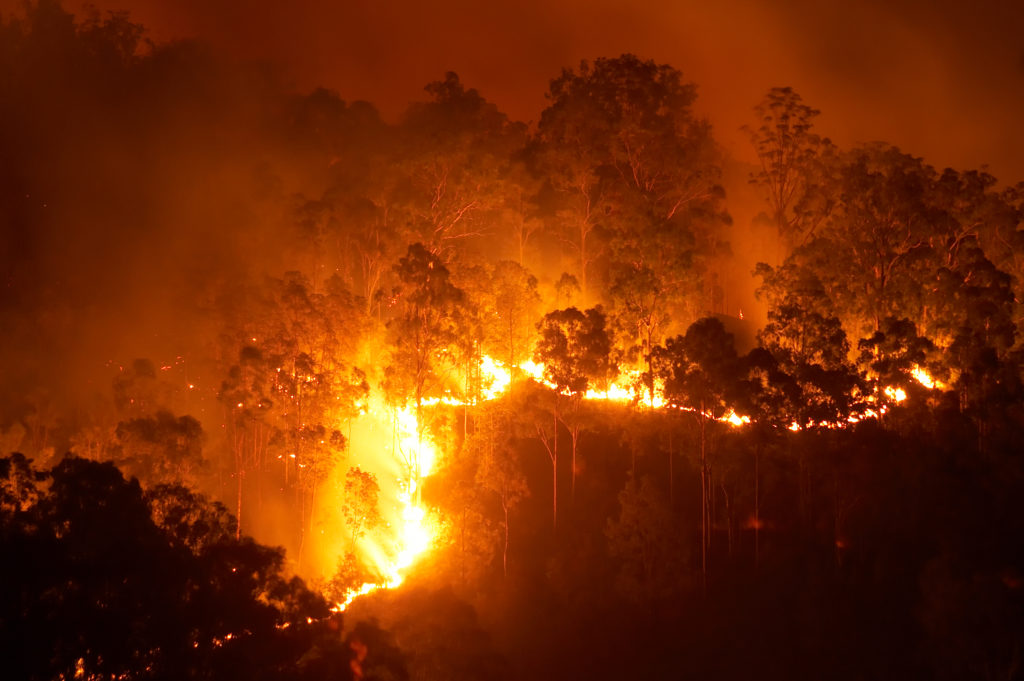The Relevance of Bushfire Management in Fire Security
In the realm of fire security, the relevance of reliable bushfire administration can not be underrated. As communities worldwide come to grips with raising instances of wildfires, the proactive strategy to avoiding and mitigating these natural catastrophes via calculated bushfire management techniques has emerged as a crucial aspect. Beyond the immediate danger to human life and home, the interplay in between bushfire management and ecological conservation, neighborhood participation, and climate modification presents complicated obstacles that demand thorough remedies.
Significance of Proactive Bushfire Prevention
Aggressive bushfire prevention methods are necessary in mitigating the devastating influences of wildfires on communities and neighborhoods. One essential element of positive bushfire prevention is gas management.
Furthermore, developing firebreaks - cleared areas where plants is purposefully gotten rid of to develop an obstacle to slow or quit the development of a bushfire - is one more important aggressive action. By implementing these techniques, the spread of wildfires can be limited, securing both human lives and the setting. Enlightening the public on fire security methods and promoting community understanding concerning the relevance of bushfire avoidance are crucial elements of positive approaches. Ultimately, proactive bushfire avoidance plays a substantial duty in guarding areas and environments from the destructive impacts of wildfires.
Role of Neighborhood Engagement in Fire Security
Involving the community in fire security efforts is indispensable to enhancing the effectiveness of positive bushfire avoidance techniques. Area interaction plays an essential role in fostering a collective understanding of the threats posed by bushfires and the significance of preparedness actions. By entailing regional citizens, authorities can disseminate important info ablaze safety and security techniques, discharge procedures, and early caution systems, encouraging people to take positive steps to protect their homes and lives.
Moreover, community involvement efforts aid build resilience within neighborhoods, promoting a feeling of unity and shared obligation in mitigating fire threats. Via workshops, training sessions, and area occasions, citizens can learn exactly how to produce defensible spaces around their homes, lower fire gas lots, and identify potential hazards. By fostering a culture of preparedness and partnership, neighborhoods can enhance their capability to respond successfully to bushfire emergency situations, decreasing the effect on lives and buildings. Inevitably, area interaction is a foundation of extensive fire security strategies, emphasizing the importance of collective activity in securing susceptible areas from the risk of bushfires.
Significance of Wild Animals Preservation in Bushfire Monitoring
Preservation of wild animals plays an important role in reliable bushfire management approaches, making certain the security of diverse ecosystems and biodiversity in fire-prone areas. Wild animals conservation is important as it adds to the total resilience of environments, assisting in their capacity to recuperate and endure from the influence of bushfires. By conserving environments and securing various varieties, the natural equilibrium within these ecosystems is preserved, which is crucial for their lasting health and sustainability.
In addition, wild animals preservation likewise assists in decreasing the danger and intensity of bushfires. Healthy communities with unspoiled wildlife populations can function as natural firebreaks, reducing down the spread of fires and restricting their destructive capacity (BAL Assessment). Certain animal types, like tunneling pets or birds that spread out seeds, play one-of-a-kind duties in stopping fires or helping in the post-fire regrowth of environments
Integrating wild animals conservation into bushfire administration approaches is not just crucial for safeguarding biodiversity but additionally for advertising the total wellness and strength of ecological communities despite boosting fire hazards.
Advantages of Strategic Gas Reduction Programs
Strategically implementing gas decrease programs is important in reducing the threat and effect of bushfires in fire-prone regions. These programs entail controlled burning, mechanical clearing, and various other methods to minimize the quantity of flammable plant life offered to fuel wildfires. By purposefully decreasing fuel loads in vital areas, BAL Report such as close to domestic communities or critical framework, the intensity and spread of bushfires can be dramatically reduced.
Among the main advantages of fuel decrease programs is the improvement of general fire strength in an environment. By creating strategic fuel breaks and lowering the continuity of plant life, these programs help to disrupt the path of a bushfire, making it easier for firemens to contain and extinguish the blaze. In addition, fuel reduction programs can secure biodiversity by preventing exceedingly extreme fires that can ravage habitats and endanger wildlife populations.
In addition, these programs can also secure human lives and residential property by lowering the risk of disastrous fires that pose a considerable risk to areas. Ultimately, tactical fuel decrease programs play a crucial role in proactive bushfire administration and promoting a more secure environment for both people and nature.
Influence of Environment Adjustment on Bushfire Threat

Greater temperature levels lead to drier vegetation, making it much more at risk to ignition. Decreased rains in certain areas prolongs dry spell conditions, even more raising the flammability of the landscape. Furthermore, the changing climate has actually changed wind patterns and weather, causing more unpredictable fire behavior and fast fire spread.
As the environment remains to alter, the regularity and intensity of bushfires are expected to increase, requiring a aggressive and adaptive method to bushfire administration. Approaches must develop to account for the altering danger landscape, integrating environment forecasts and taking into consideration long-term resilience in fire monitoring planning. Dealing with the effect of climate adjustment on bushfire risk is important in creating reliable techniques to secure lives, residential or commercial property, and the atmosphere.
Final Thought
To conclude, proactive bushfire prevention, neighborhood engagement, wildlife conservation, strategic gas decrease programs, and factor to consider of climate change are essential components in reliable fire security. By executing these techniques, we can better take care of bushfire dangers and safeguard both human lives and the environment. BAL Assessment. It is essential that stakeholders work with each other to prioritize these measures to minimize the devastating influence of bushfires on communities and communities

As the climate continues to alter, the frequency and strength of bushfires are expected to increase, requiring a proactive and adaptive strategy to bushfire monitoring.In conclusion, proactive bushfire avoidance, neighborhood engagement, wild animals conservation, calculated fuel decrease programs, and factor to consider of climate adjustment are vital elements in reliable fire security.
 Ralph Macchio Then & Now!
Ralph Macchio Then & Now! Scott Baio Then & Now!
Scott Baio Then & Now! Andrew Keegan Then & Now!
Andrew Keegan Then & Now! Hailie Jade Scott Mathers Then & Now!
Hailie Jade Scott Mathers Then & Now! Sarah Michelle Gellar Then & Now!
Sarah Michelle Gellar Then & Now!